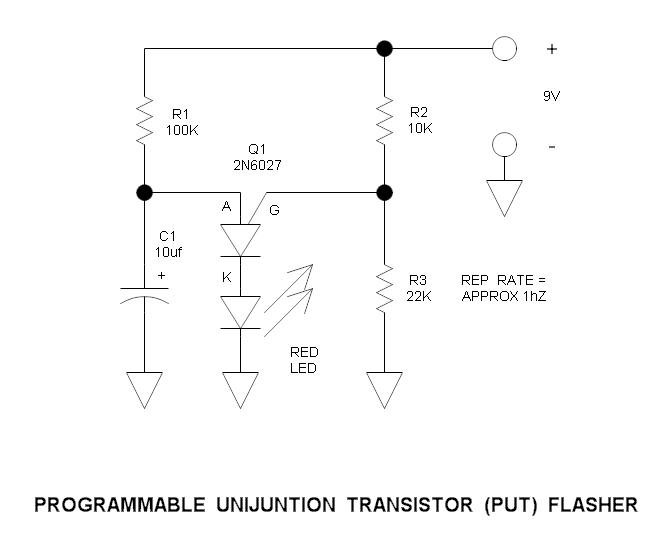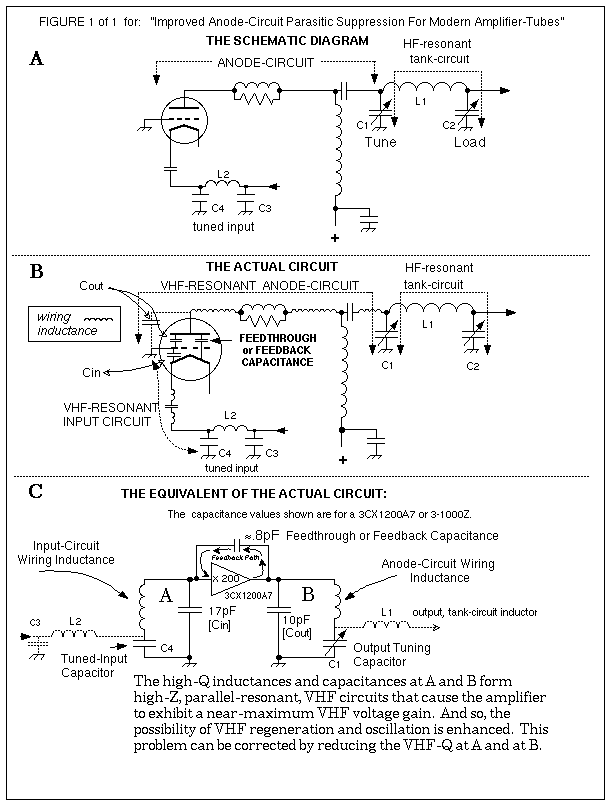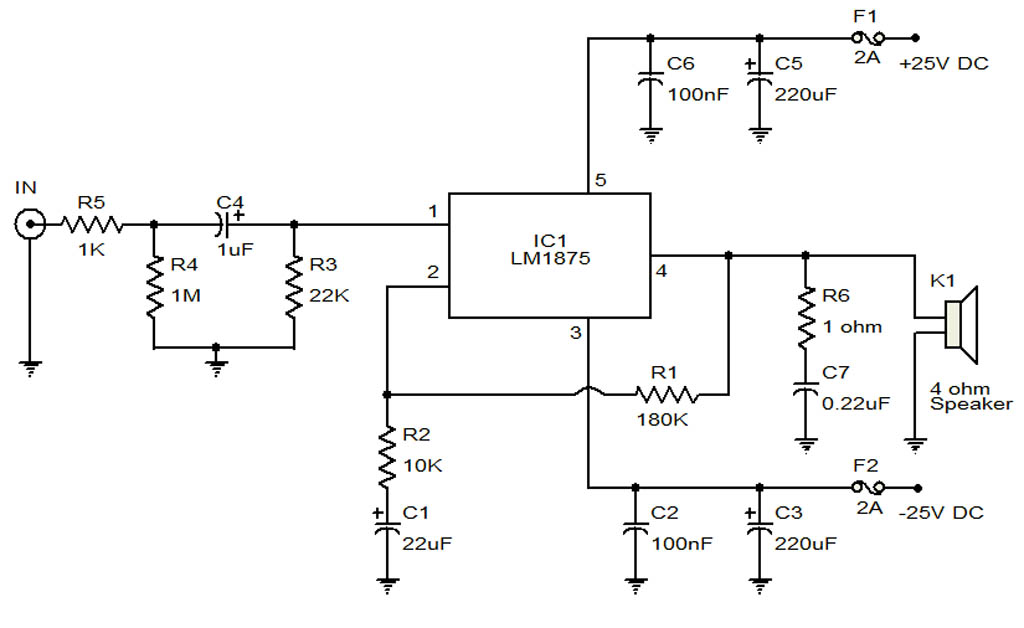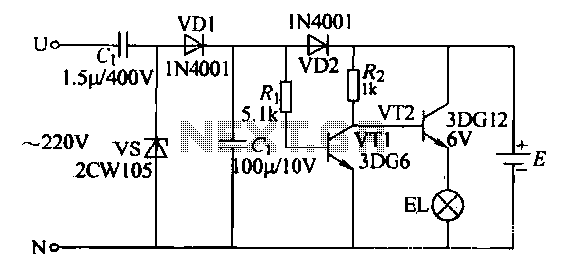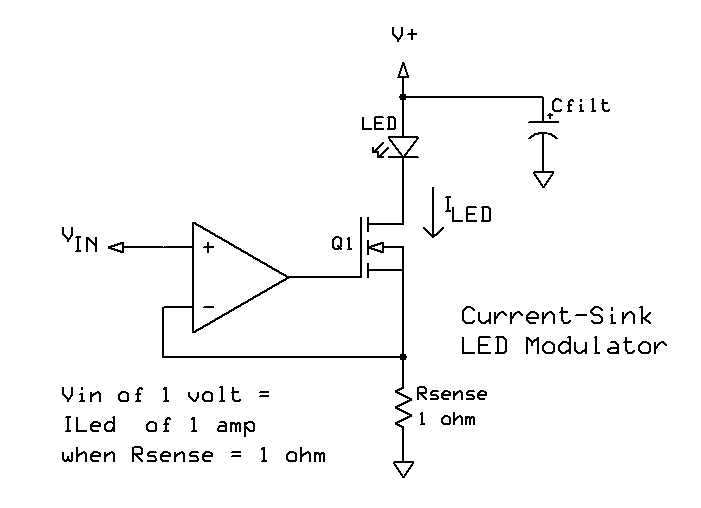
Audio Power Amplifier Circuit
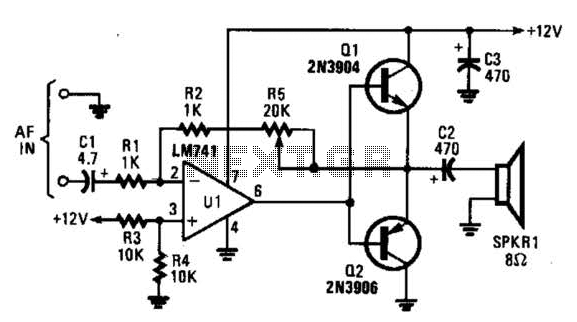
The circuit is designed around an LM741 operational amplifier configured as an inverting amplifier. It is utilized to drive complementary transistors (Q1 and Q2). The feedback loop of the op-amp incorporates the base-emitter junctions of both transistors, which aids in minimizing crossover distortion that typically arises due to the emitter-to-base junction voltage drop of approximately 0.6 V. Additionally, a potentiometer (R5) is employed to adjust the amplifier's voltage gain, varying it from 1 to around 20. The circuit can deliver up to 0.5 W if a heatsink is integrated with the transistors.
The circuit operates by utilizing the LM741 op-amp in an inverting configuration, which allows for signal inversion and amplification. The input signal is fed into the inverting terminal of the op-amp, while the non-inverting terminal is grounded. The feedback loop, which includes the base-emitter junctions of the complementary transistors, plays a crucial role in stabilizing the output and minimizing distortion during the transition between the on and off states of the transistors.
The inclusion of the potentiometer R5 enables the user to finely tune the gain of the amplifier. By adjusting R5, the feedback resistance changes, thereby altering the gain according to the formula for an inverting amplifier, which is given by -Rf/Rin, where Rf is the feedback resistor and Rin is the input resistor. This flexibility allows for a wide range of gain settings, accommodating various application requirements.
For enhanced thermal management and efficiency, the transistors Q1 and Q2 can benefit from the addition of a heatsink. This is particularly important when the circuit is required to deliver higher power levels, such as the maximum output of 0.5 W. The heatsink dissipates excess heat generated during operation, thereby ensuring reliable performance and longevity of the components.
In summary, this circuit effectively combines an LM741 op-amp with complementary transistors to create a versatile amplifier capable of driving loads while minimizing distortion and allowing for adjustable gain. The thoughtful design considerations, including the feedback loop and thermal management, contribute to its overall effectiveness in various electronic applications. The circuit, built around an LM741 op amp configured as an inverting amplifier, is used to drive complementary transistors (Ql and Q2). The op amp`s feedback loop includes the base-emitter junctions of both transistorsan arrangement that helps to reduce crossover distortion that would normally occur as-a result of the emitter-to-base junction voltage drop of about 0,6 V.
Potentiometer R5 varies the amplifier`s voltage gain from 1 to about 20. As much as 0.5 W can be obtained from the circuit if a heatsink is added to the transistors. 🔗 External reference
The circuit operates by utilizing the LM741 op-amp in an inverting configuration, which allows for signal inversion and amplification. The input signal is fed into the inverting terminal of the op-amp, while the non-inverting terminal is grounded. The feedback loop, which includes the base-emitter junctions of the complementary transistors, plays a crucial role in stabilizing the output and minimizing distortion during the transition between the on and off states of the transistors.
The inclusion of the potentiometer R5 enables the user to finely tune the gain of the amplifier. By adjusting R5, the feedback resistance changes, thereby altering the gain according to the formula for an inverting amplifier, which is given by -Rf/Rin, where Rf is the feedback resistor and Rin is the input resistor. This flexibility allows for a wide range of gain settings, accommodating various application requirements.
For enhanced thermal management and efficiency, the transistors Q1 and Q2 can benefit from the addition of a heatsink. This is particularly important when the circuit is required to deliver higher power levels, such as the maximum output of 0.5 W. The heatsink dissipates excess heat generated during operation, thereby ensuring reliable performance and longevity of the components.
In summary, this circuit effectively combines an LM741 op-amp with complementary transistors to create a versatile amplifier capable of driving loads while minimizing distortion and allowing for adjustable gain. The thoughtful design considerations, including the feedback loop and thermal management, contribute to its overall effectiveness in various electronic applications. The circuit, built around an LM741 op amp configured as an inverting amplifier, is used to drive complementary transistors (Ql and Q2). The op amp`s feedback loop includes the base-emitter junctions of both transistorsan arrangement that helps to reduce crossover distortion that would normally occur as-a result of the emitter-to-base junction voltage drop of about 0,6 V.
Potentiometer R5 varies the amplifier`s voltage gain from 1 to about 20. As much as 0.5 W can be obtained from the circuit if a heatsink is added to the transistors. 🔗 External reference
